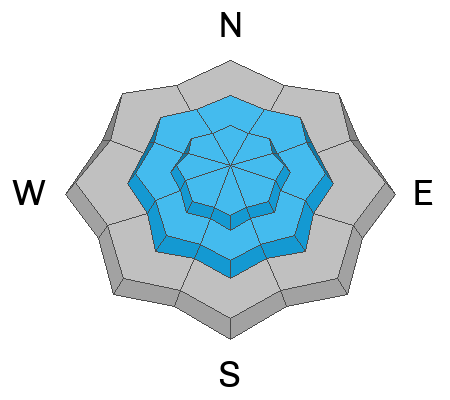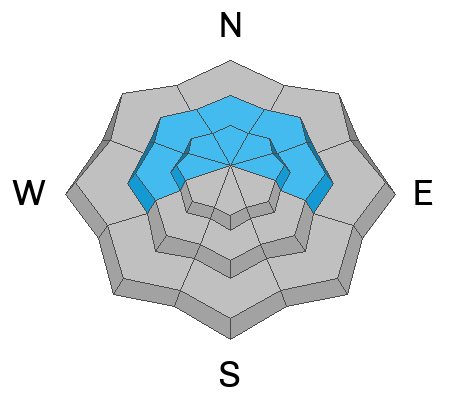This Morning: Temperatures are 15°-25° F and winds are from the southwest through northwest. Between 9,500' and 10,500' winds are gusting 15-25 mph. 11,000' winds are much stronger, gusting into the 50's mph. No new snow overnight.
Snow totals since Wednesday are 12-14" containing 0.75-1.2" of water.
Today may be one of those days .... temperatures will rise into the 20's F and winds will be from the west, increasing throughout the day. Mid-elevation winds will gust into the 20's with upper elevation winds gusting around 50 mph. Snow will develop by late morning, with periods of heavy snow likely this afternoon, with 4-6" of new snow by sunset.
Extended: A break Saturday with partial clearing, followed by another modest system Sunday .... brief break Monday .... snow Tuesday/Wednesday. ❄️
Several natural and skier-triggered avalanches were reported from the backcountry on Thursday, with a natural avalanche cycle occurring early afternoon during a period of heavy precipitation intensity (PI). Avalanches were reported on aspects west through north and east, between 9,000 - 10,000' feet, 6-18" deep and up to 100' wide. Avalanches were running within a density inversion in the storm snow or at the interface with the old snow surface. I'm sure there were many more avalanches on Thursday than the 10 we heard about. Eric Ramirez sent us this stunning video of powder cloud coming down from
Elk Point at Aspen Grove yesterday.
A team of UAC forecasters was in the
Snake Creek region on Thursday, and their video describes recent avalanche activity and how to assess the snowpack:











